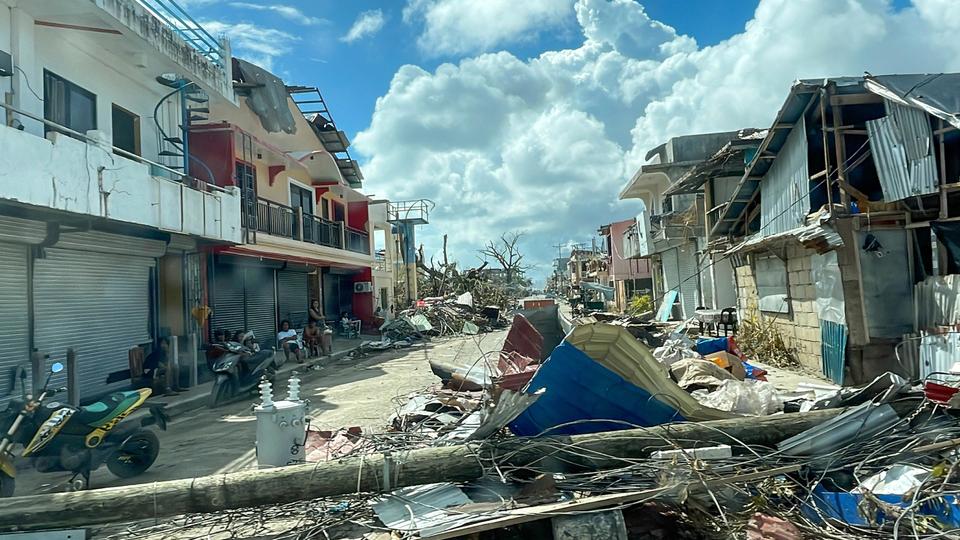Nearly 210 people were killed, 239 injured and 52 are missing after Typhoon Rai ravaged the southern and central regions of the archipelago, police say.

The death toll from the strongest typhoon to hit the Philippines this year has surged to 208, the national police said, making it one of the deadliest storms to hit the country in recent years.
At least 239 people were injured and 52 were missing after Typhoon Rai ravaged the southern and central regions of the archipelago, the police tally showed.
More than 300,000 people fled their homes and beachfront resorts as Rai slammed into the country on Thursday as a super typhoon.
The Philippine Red Cross has reported "complete carnage" in coastal areas.
"Homes, hospitals, school and community buildings have been ripped to shreds," Red Cross Chairman Richard Gordon said earlier.
Comparisons with Super Typhoon Haiyan
The storm tore off roofs, uprooted trees, toppled concrete power poles, smashed wooden houses to pieces and flooded villages –– sparking comparisons with Super Typhoon Haiyan in 2013.
Haiyan, called Yolanda in the Philippines, was the deadliest cyclone on record in the country, leaving more than 7,300 people dead or missing.
One of the hardest-hit islands this time was Bohol –– known for its beaches, rolling "Chocolate Hills", and tiny tarsier primates –– where at least 74 people have died, provincial Governor Arthur Yap said on his official Facebook page.
There has also been widespread destruction on Siargao, Dinagat and Mindanao islands, which bore the brunt of the storm when it slammed into the country packing wind speeds of 195 kilometres per hour.
At least 10 people died on the Dinagat Islands, provincial information officer Jeffrey Crisostomo told AFP news agency on Sunday.
S.O.S was painted on a road in the popular tourist town of General Luna on Siargao island, where surfers and holidaymakers had flocked ahead of Christmas, as people struggle to find water and food.
Search, rescue efforts continue
Swathes of the affected areas have no communications, hampering efforts of disaster agencies to assess the full extent of the storm's damage.
Electricity also has been knocked out, affecting water-refilling stations and ATMs.
Thousands of military, police, coast guard and fire personnel have been deployed to assist in search and rescue efforts.
Coast guard and naval vessels carrying food, water and medical supplies have been dispatched, while heavy machinery –– like backhoes and front-end loaders –– have been sent to help clear roads blocked by fallen power poles and trees.
The Philippines –– ranked among the globe's most vulnerable nations to the impacts of climate crisis –– is hit by an average of 20 storms and typhoons every year, which typically wipe out harvests, homes and infrastructure in already impoverished areas.
Social media is bold.
Social media is young.
Social media raises questions.
Social media is not satisfied with an answer.
Social media looks at the big picture.
Social media is interested in every detail.
social media is curious.
Social media is free.
Social media is irreplaceable.
But never irrelevant.
Social media is you.
(With input from news agency language)
If you like this story, share it with a friend!
We are a non-profit organization. Help us financially to keep our journalism free from government and corporate pressure














0 Comments